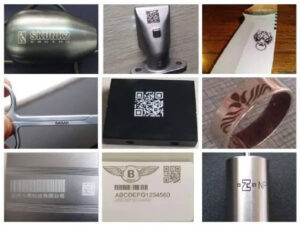In today’s fast-paced industrial world, marking and identification have become essential for tracking, branding, and compliance. Whether it’s a barcode on a phone part or a logo on a metal tool, the need for precision, speed, and permanence has never been higher. That’s where fiber laser technology comes in.
So, what is a fiber laser marking machine, and why is it gaining popularity across industries like automotive, electronics, medical devices, and aerospace? In this article, we’ll explain everything you need to know—from how it works to what makes it different from other marking systems.
Understanding Fiber Laser Marking Technology
A fiber laser marking machine uses a highly concentrated beam of light to permanently mark or engrave the surface of a material. The term “fiber” refers to the fiber optic cable that is doped with rare-earth elements like ytterbium. This setup amplifies the laser beam and makes it extremely precise, efficient, and powerful.
The laser beam interacts with the material in different ways—depending on the speed, power, and frequency—creating marks through:
- Annealing (for color changes without surface damage)
- Engraving (deeper, tactile marks)
- Etching (shallow surface marks)
- Foaming (for plastics, creating raised marks)
What Materials Can It Mark?
Fiber laser marking machines are especially suitable for metallic materials and some hard plastics. Common materials include:
- Stainless steel
- Aluminum
- Copper
- Titanium
- Brass
- Plastics like ABS, PVC, and polycarbonate (with adjustments)
- Coated or anodized metals
This makes fiber lasers ideal for industries that demand high precision and durability in their labeling processes.
Main Applications of Fiber Laser Marking Machines
- Industrial Product Traceability
Marking serial numbers, barcodes, QR codes, and data matrix codes on parts for quality control and tracking. - Branding and Customization
Companies can laser their logos, product names, or decorative elements with unmatched detail and permanence. - Medical Devices
Surgical tools and implants require clear, long-lasting identification. Fiber lasers meet FDA and UDI standards. - Electronics and Circuit Boards
Fiber lasers can mark even the smallest components without causing heat damage or affecting performance. - Automotive Parts
Ideal for VIN codes, gear numbers, and component IDs where marks must last the lifetime of the vehicle.
Benefits of Using a Fiber Laser Marking Machine
✔ High Speed and Efficiency
Fiber lasers can mark in milliseconds. This is ideal for mass production lines, improving throughput and reducing labor costs.
✔ Permanence and Accuracy
Marks are resistant to heat, chemicals, abrasion, and time. You get consistent, readable results every time.
✔ Low Maintenance
Fiber laser systems are solid-state and contain no moving parts, so they require minimal upkeep. Lifespan? Up to 100,000 hours.
✔ No Consumables Needed
Unlike inkjet or chemical etching, fiber laser machines don’t need inks, solvents, or gases—saving money and the environment.
✔ Compact and Easy to Use
Many fiber laser machines are compact, easy to integrate into production lines, and come with intuitive software.
Fiber Laser vs CO2 Laser vs UV Laser
| Feature | Fiber Laser | CO2 Laser | UV Laser |
| Best for | Metals, hard plastics | Wood, acrylic, paper | Glass, delicate plastics |
| Speed | Fast | Moderate | Slower |
| Maintenance | Low | Medium | Low |
| Cost | Moderate | Lower | Higher |
| Durability | High | Medium | High |
If your main focus is metal marking, the fiber laser is the top choice.
How to Choose the Right Fiber Laser Marking Machine
Here are some key factors to consider before purchasing:
- Wattage: 20W is good for general use; 30W or 50W for deeper marks or higher speed.
- Marking Area: Common sizes are 110×110 mm, 150×150 mm, or larger with adjustable lenses.
- Software Compatibility: Ensure the software supports popular formats (AI, DXF, PLT, etc.) and offers batch coding, automation, and variable data.
- Cooling Method: Most fiber lasers use air cooling, which reduces complexity and cost.
- After-Sales Support: Choose a supplier that offers training, technical support, and warranty coverage.
Conclusion: Why Invest in a Fiber Laser Marking Machine?
If you’re looking for a precise, permanent, and low-cost solution for marking metals and plastics, a fiber laser marking machine is hard to beat. It delivers professional-grade results with minimal maintenance and no consumables, making it a favorite among manufacturers and small businesses alike.
Whether you’re a factory manager, a startup owner, or a custom engraver, understanding what a fiber laser marking machine does will help you stay ahead in quality, compliance, and branding.
Need Help Choosing the Right Model?
Our team is ready to guide you to the perfect machine based on your material, budget, and production needs.
👉 Contact us now for a free consultation or demo.

